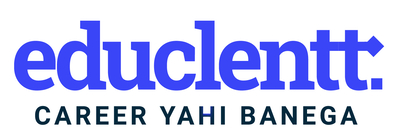Demand for an Object-Oriented DSA Language Today
Learning Data Structures and Algorithms (DSA) is essential for every software developer. Choosing the right programming language—like C++, Java, or Python — can make mastering DSA more effective and aligned with your career goals.
Read more
Popular Languages for DSA
- C++: Traditional choice for system-level efficiency and granular understanding of DSA.
- Java: Object-oriented, simplifies complex algorithms, platform-independent, with rich libraries.
- Python: Beginner-friendly, readable syntax, supported by a vast array of libraries.
- JavaScript: Improves web application performance and efficiency.
- Go: High-performance language, good for concurrent processing applications.
- Rust: Memory-safe without sacrificing performance, ideal for critical systems.
- Swift: Suited for iOS/macOS development and Apple ecosystem applications.
Time to Master an Object-Oriented DSA Language
Mastering DSA involves multiple steps:
- Learn a Programming Language: Understand syntax, data types, and control structures of your chosen language.
- Understand Time and Space Complexities: Learn Big O notation and analyze algorithm efficiency.
- Learn Individual Data Structures and Algorithms: Arrays, strings, linked lists, stacks, queues, trees, graphs, searching, sorting, divide and conquer, dynamic programming, recursion, and more.
- Practice Regularly: Solve problems on platforms like LeetCode, HackerRank, or GeeksforGeeks.
- Compete and Improve: Join coding contests, learn from others, and optimize your solutions.
- Estimated Time: With dedication, proficiency is typically achievable in 4–6 months.
Learning Object-Oriented DSA by Yourself
Steps to self-learn DSA effectively:
- Choose a Programming Language: Python, Java, or C++ to implement DSA concepts.
- Understand Time & Space Complexities: Helps analyze efficiency of algorithms.
- Master Individual Data Structures and Algorithms: Includes arrays, strings, linked lists, stacks, queues, trees, graphs, greedy algorithms, recursion, backtracking, and dynamic programming.
- Practice Consistently: Solve problems and apply DSA concepts in projects.
- Compete & Improve: Engage in coding contests on Codeforces, LeetCode, or HackerRank to refine skills.
- Learn Object-Oriented Analysis and Design (OOAD): Model and design complex systems using object-oriented principles for modular solutions.
DSA is crucial for software development, whether building personal projects or targeting top tech companies like Google, Microsoft, or Netflix.
Learn Object-Oriented Data Structures & Algorithms (DSA)
Read More
Structured Curriculum
Educlentt offers well-organized courses covering essential DSA topics. You’ll learn about arrays, linked lists, trees, graphs, sorting algorithms, and more.
Experienced Instructors
The institute employs skilled instructors who provide clear explanations, practical examples, and guidance throughout your learning journey.
Hands-On Practice
Educlentt emphasizes hands-on practice. You’ll work on coding exercises, projects, and real-world scenarios to reinforce your understanding.
Coding Challenges
Participate in coding challenges and contests organized by Educlentt. These help you apply DSA concepts and improve problem-solving skills.
Community and Peer Learning
Connect with fellow learners, discuss doubts, and collaborate on projects. Learning from peers enhances your understanding.
Career Support
Educlentt assists with interview preparation, resume building, and job placement. They may have partnerships with tech companies for internships or job opportunities.

Object-Oriented DSA – FAQs
1. Why choose Educlentt for an Object-Oriented DSA course?
Choose Educlentt for an Object-Oriented DSA course because it offers comprehensive, hands-on training with expert instructors and an up-to-date curriculum tailored for real-world applications. Additionally, the platform provides flexible learning schedules and personalized support to enhance your learning experience.
2. What prior knowledge is required to enroll in the Object-Oriented DSA course?
A basic understanding of programming concepts and familiarity with at least one programming language is recommended. Knowledge of object-oriented principles is helpful but not mandatory.
3. How is the course structured, and what topics are covered?
The course is structured into modules, each focusing on different aspects of data structures and algorithms using object-oriented principles. Topics include arrays, linked lists, stacks, queues, trees, graphs, sorting algorithms, and design patterns.
4. Will I receive a certificate upon completion of the course?
Yes, participants who successfully complete the course and any required assessments will receive a certificate of completion, which can be used to showcase their skills to potential employers.
Demand for an Object-Oriented DSA language in Today’s Time?
When it comes to learning Data Structures and Algorithms (DSA), choosing the right programming language is crucial. Here are some popular options:
- C++:
- A traditional choice due to its close relationship with system hardware and efficient execution. It provides a solid foundation for understanding DSA at a granular level.
- Java:
- Known for its object-oriented approach, Java simplifies the implementation of complex data structures and algorithms. Its platform independence and extensive libraries make it a favorite among many developers.
- Python:
- With simple syntax and readability, Python is an excellent choice for beginners. Despite being slower than C++ and Java, its vast array of libraries and community support makes learning DSA easier.
- JavaScript:
- Indispensable for web developers, JavaScript is beneficial for improving the performance and efficiency of web applications.
- Go:
- Known for performance and concurrency, Go is becoming popular for learning DSA, especially in applications requiring concurrent processing.
- Rust:
- Offers memory safety features without sacrificing performance, making it suitable for projects where safety and speed are crucial.
- Swift:
- Tailored for the Apple ecosystem, Swift is a good option for those focusing on iOS or macOS applications.
Choose a language that aligns with your learning curve and career goals. Each language has its strengths, so consider your preferences and the type of projects you want to work on!
In how much time can I master an Object-Oriented DSA language?
Mastering an Object-Oriented DSA (Data Structures and Algorithms) language involves several steps. Here’s a professional breakdown:
- Learn a Programming Language:
- Start by choosing a programming language (e.g., C++, Java, Python) that aligns with your goals.
- Understand the syntax, data types, and control structures of the language.
- Understand Time and Space Complexities:
- Dive into complexity analysis (Big O notation).
- Learn how to analyze the efficiency of algorithms in terms of time and memory usage.
- Learn Individual Data Structures and Algorithms:
- Study fundamental data structures:
- Arrays, strings, linked lists, stacks, queues, trees, graphs, etc.
- Explore common algorithms:
- Searching (binary search, linear search), sorting (quick sort, merge sort), divide and conquer, greedy algorithms, dynamic programming, etc.
- Study fundamental data structures:
- Practice Regularly:
- Consistent practice is key.
- Solve problems related to DSA on platforms like LeetCode, HackerRank, or GeeksforGeeks.
- Implement data structures and algorithms from scratch.
- Compete and Improve:
- Participate in coding contests and challenges.
- Learn from others’ solutions and optimize your own.
- Estimated Time:
- There’s no one-size-fits-all answer, but dedicated learners can typically achieve proficiency in 4 to 6 months.
Remember, consistency and practice matter more than speed. Spaced repetition helps reinforce concepts over time.
How can I learn an Object-Oriented DSA by myself?
Learning Object-Oriented Data Structures and Algorithms (DSA) is essential for building robust software applications. Here are some steps to get started:
- Learn a Programming Language:
- Choose a programming language (such as Python, Java, or C++) to express and implement DSA concepts. Understanding the syntax and features of your chosen language is crucial.
- Understand Time and Space Complexities:
- Familiarize yourself with the complexities of DSA. Learn about time complexity (Big O notation) and space complexity. These concepts help you analyze the efficiency of algorithms.
- Master Individual Data Structures and Algorithms: Dive into the following topics:
- Arrays:
- Understand array manipulation, indexing, and common operations.
- Strings:
- Learn string handling, pattern matching, and manipulation.
- Linked Lists:
- Explore singly linked lists, doubly linked lists, and their operations.
- Searching Algorithms:
- Study linear search, binary search, and hash-based searching.
- Sorting Algorithms:
- Learn sorting techniques like bubble sort, merge sort, and quicksort.
- Divide and Conquer Algorithms:
- Understand concepts like merge sort and binary search.
- Stacks and Queues:
- Explore stack and queue data structures.
- Trees and Graphs:
- Learn about binary trees, BSTs, and graph traversal algorithms.
- Greedy Methodology:
- Understand greedy algorithms.
- Recursion and Backtracking:
- Master recursive techniques.
- Dynamic Programming:
- Explore dynamic programming concepts.
- Practice Regularly:
- Regular practice is key. Solve problems, participate in coding challenges, and implement DSA concepts in real-world scenarios.
- Compete and Improve:
- Engage in competitive programming. Participate in coding contests on platforms like Codeforces, LeetCode, or HackerRank. This helps you refine your skills and become proficient in DSA.
Additionally, consider learning Object-Oriented Analysis and Design (OOAD). OOAD employs object-oriented principles to model and design complex systems1. It involves analyzing the problem domain, representing it using objects, and designing modular solutions.
Remember, DSA plays a crucial role in software development, whether you’re building your own projects or aiming for tech giants like Google, Microsoft, or Netflix.
How can Educlentt Institute help in learning an Object-Oriented DSA?
Educlentt Institute can be a valuable resource for learning Object-Oriented Data Structures and Algorithms (DSA). Here’s how it can assist you:
- Structured Curriculum:
- Educlentt offers well-organized courses covering essential DSA topics. You’ll learn about arrays, linked lists, trees, graphs, sorting algorithms, and more.
- Experienced Instructors:
- The institute employs skilled instructors who provide clear explanations, practical examples, and guidance throughout your learning journey.
- Hands-On Practice:
- Educlentt emphasizes hands-on practice. You’ll work on coding exercises, projects, and real-world scenarios to reinforce your understanding.
- Coding Challenges:
- Participate in coding challenges and contests organized by Educlentt. These help you apply DSA concepts and improve problem-solving skills.
- Community and Peer Learning:
- Connect with fellow learners, discuss doubts, and collaborate on projects. Learning from peers enhances your understanding.
- Career Support:
- Educlentt assists with interview preparation, resume building, and job placement. They may have partnerships with tech companies for internships or job opportunities.
- Coding Challenges:
- Why choose Educlentt for an Object-Oriented DSA course?
- Choose Educlentt for an Object-Oriented DSA course because it offers comprehensive, hands-on training with expert instructors and an up-to-date curriculum tailored for real-world applications. Additionally, the platform provides flexible learning schedules and personalized support to enhance your learning experience.
- What prior knowledge is required to enroll in the Object-Oriented DSA course?
- A basic understanding of programming concepts and familiarity with at least one programming language is recommended. Knowledge of object-oriented principles is helpful but not mandatory.
- How is the course structured, and what topics are covered?
- The course is structured into modules, each focusing on different aspects of data structures and algorithms using object-oriented principles. Topics include arrays, linked lists, stacks, queues, trees, graphs, sorting algorithms, and design patterns.
- Will I receive a certificate upon completion of the course?
- Yes, participants who successfully complete the course and any required assessments will receive a certificate of completion, which can be used to showcase their skills to potential employers.
Enquire Now

Learn The Essential Skills

Get Ready for The Next Career

Earn Certificates And Degrees

Master At Different Areas

Learn The Essential Skills

Get Ready for The Next Career

Earn Certificates And Degrees

Master At Different Areas
Find Right Course For You

Still Confused Which Course to Choose?
Don’t Worry, Our Experts are here to Guide You.
Still Confused Which Course to Choose?
Don’t Worry, Our Experts are here to Guide You.
At Educlentt, we believe that education is the foundation for a brighter future. Our mission is to provide high-quality, accessible, and personalized learning experiences for students of all ages. Whether you’re looking to enhance your skills, advance your career, or explore new knowledge areas, we offer a wide range of courses designed to meet your needs. With a team of experienced educators and industry professionals, Educlentt is committed to empowering learners through innovative teaching methods and comprehensive course material.
Student Testimonials





Student Testimonial

Lorem ipsum dolor sit amet, consectetur adipiscing elit. Curabitur laoreet cursus volutpat. Aliquam sit amet ligula et justo tincidunt laoreet non vitae lorem. Aliquam porttitor tellus enim, eget commodo augue porta ut. Maecenas lobortis ligula vel tellus sagittis ullamcorperv vestibulum pellentesque cursutu.

Lorem ipsum dolor sit amet, consectetur adipiscing elit. Curabitur laoreet cursus volutpat. Aliquam sit amet ligula et justo tincidunt laoreet non vitae lorem. Aliquam porttitor tellus enim, eget commodo augue porta ut. Maecenas lobortis ligula vel tellus sagittis ullamcorperv vestibulum pellentesque cursutu.

Lorem ipsum dolor sit amet, consectetur adipiscing elit. Curabitur laoreet cursus volutpat. Aliquam sit amet ligula et justo tincidunt laoreet non vitae lorem. Aliquam porttitor tellus enim, eget commodo augue porta ut. Maecenas lobortis ligula vel tellus sagittis ullamcorperv vestibulum pellentesque cursutu.

Lorem ipsum dolor sit amet, consectetur adipiscing elit. Curabitur laoreet cursus volutpat. Aliquam sit amet ligula et justo tincidunt laoreet non vitae lorem. Aliquam porttitor tellus enim, eget commodo augue porta ut. Maecenas lobortis ligula vel tellus sagittis ullamcorperv vestibulum pellentesque cursutu.








